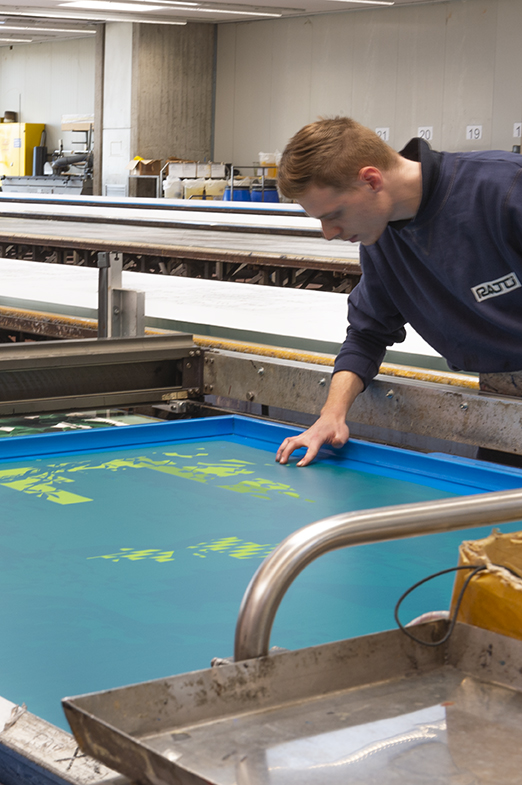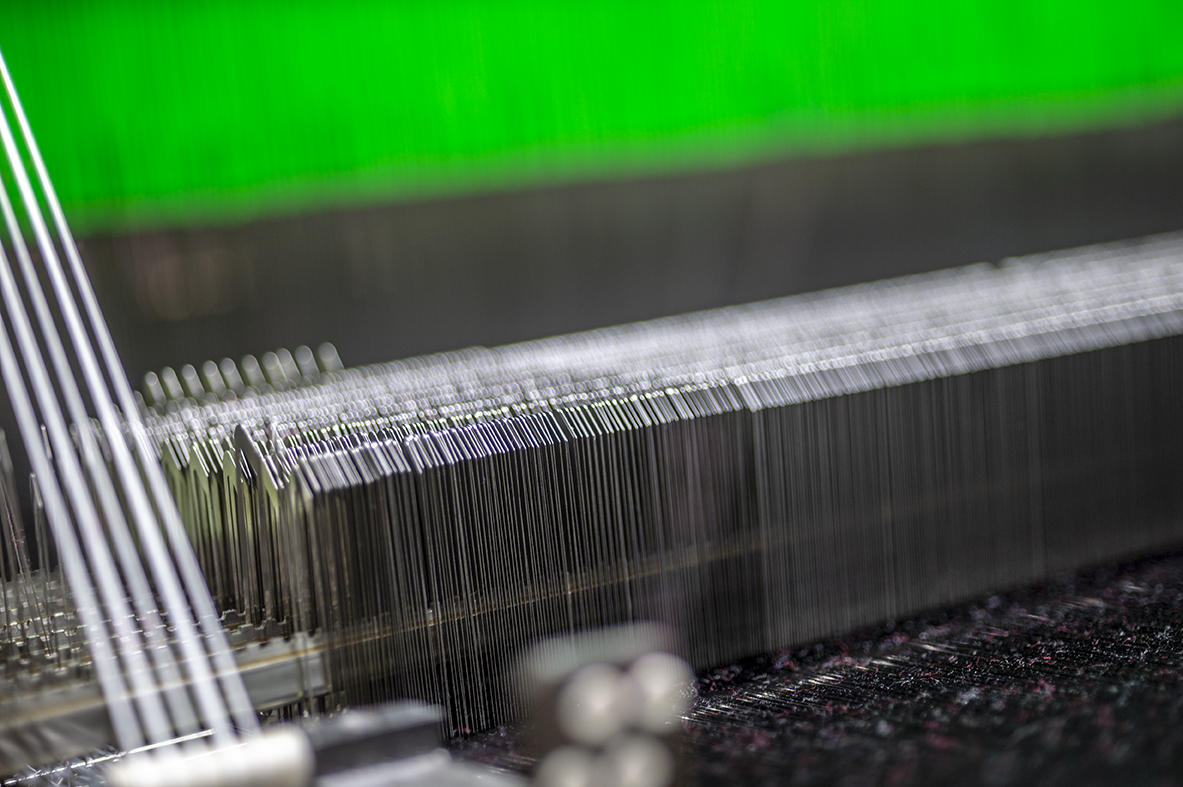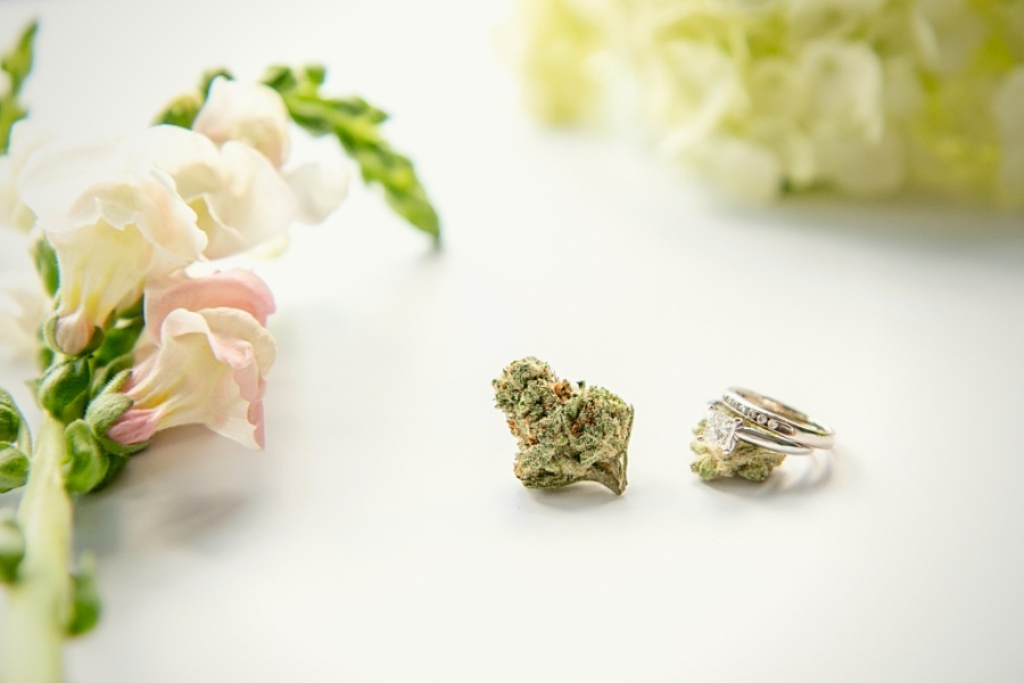In a company like Ratti, which controls the entire production cycle, from the initial creative phase right through to production, various fabric production processes are used in both the weaving and printing departments. Here you can find all kinds of techniques, from traditional to cutting-edge, being used.
Each fabric production process in the printing departments is generally a synthesis of heritage and innovation, as well as craftsmanship and attention to detail. When we talk about fabric printing techniques, we are generally referring to different types and ways of fixing colour onto fabric.
BEHIND EACH PRINTING STYLE, A SPECIFIC TECHNIQUE
Direct printing is the most common and widespread method: with this technique the colour is applied, where applicable, after which it is fixed. With this fabric printing technique the entire surface is coated following a predefined pattern dictated by the design. In the case of direct digital printing, the dye takes on a more liquid appearance, an ink that is printed onto the fabric by means of a jet of colour.
The discharge printing technique starts with a uniformly dyed fabric where the dye is removed (corroded) by chemically attacking it. With the resist printing technique, you start with a paste containing a wax or resin that (temporarily) waterproofs the fabric, and the pattern is printed as a negative. The colour in the “waxed” areas will not be fixed and so they will retain their original colour.
The last printing technique generally found in the departments of well-structured companies such as Ratti is transfer printing. This process consists of applying a paste to a “transport medium” (e.g. a special paper) and then, with the help of a hot calender, transferring it onto the fabric. This is a printing technique that uses the sublimation process.

THE STAGES OF TEXTILE PRODUCTION
There are many stages in the fabric production process, from spinning to weaving through to the ennoblement phase, also called finishing.
One of the most important steps in the entire fabric production process is spinning. During this stage combers, mixers and couplers rigorously sort the fibre, be it wool, silk, cotton or another sustainable material, bringing it to a level of absolute perfection. The threads are then stretched lengthwise on the loom: this is the moment of warping, where human manual intervention is still, even today, key to obtaining a product of excellence. The warp must now interweave with the weft to finally give life to the fabric. This is the weaving phase.
During the finishing process, human manual intervention is again key. The expert hand of highly specialised professionals, such as those of the Ratti Group, completes and perfects the work carried out so far: a few more days of work are needed to check the quality of the fabric.
These are the operations that guarantee the perfection of the final result. In this final step in the finishing process, the quality of the fabric is enhanced through skilled processing.



